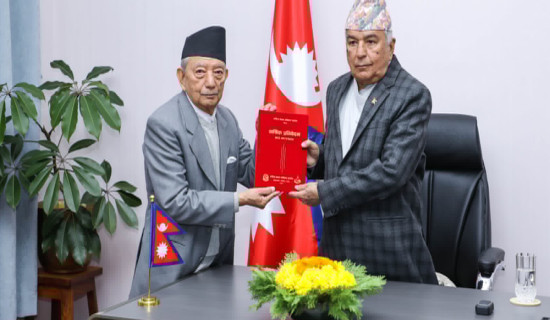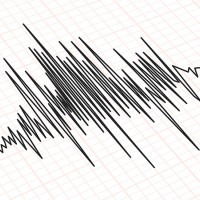- Sunday, 7 December 2025
Media News And Non-news
When an academic writes on an important aspect of mass media, it attracts interest in anticipation of a structured and relatively analytical approach to the theme undertaken. If a practising hand does so, the work is expected to closely chronicle the topic and its subtopics from the perspective of hands-on skills. And someone with more than two decades of academic career and no less than three formal Master’s degrees plus an LLB under his belt, almost concurrently with nearly equal length of field experience as a working journalist in print, radio, TV and online news portals, the output is a rich blend of theoretical outlook and an enriching hands-on experience in all major branches of news outlets.
There are books on basically print journalism, broadcast content and visual world but not many covering all these in a compact form. Shri Ram Poudel, whose PhD dissertation at Tribhuvan University focused on freedom of expression, has come up with Nepalma Aamsanchar: Samachar ra Gair Samachar Mediako Nalibeli [All About News and Non-news Media], brought out by Mandap Publication House this year. As a contributor to media journals, he is a noted name.
Dr. Kundan Aryal, the head of TU’s Central Department of Journalism and Mass Communication, of which Dr. Poudel is a faculty, looks at the narrative dwelling upon the various political-social-cultural influences on policy and legal provisions as “notable aspects”, touching upon also the struggle and progress of Nepal’s mass communication landscape. In brief, the book is about the gradual reshaping of the media world. Mass communication and journalism readers, analysts and students should find it a whirlwind ride through the media ages from the earliest to the latest. Print, broadcast, new agency and online outlets are its key features.
Significant stride
In the absence of timely deliberations on current and unfolding development, confusion and even chaos gets created. References to past events enable subsequent studies to put the present in perspective and move forward for proposals and concrete measures. Poudel wades in the abundant facts woven in a short, crisp narrative. An inquisitive mind, he sets out to explore the Nepali media terrain with a quick, sharp look and sharper analysis that navigates and delves into the landscape to produce an absorbing read.
The author sets the tone for other critical aspects of the communication landscape in Nepal—an area that needs to be explored with enormous energy and minimum resources for meeting the essential elements of this vast area, both in subject and subtopics. Against the background of research works, a PhD is but an important but first of the many stairs for mining the treasure trove of various subjects. Not all people give continuity to the academically anticipated responsibility. The task relies on self-generating motivation.
Those who undertake the challenge with unremitting perseverance bolster their prime area of academic pursuit, also engaging peer groups and others in the issues raised and new fields for further studies. Probe into access to information and some of the excesses committed by organised groups, and misuse of state machinery and misdemeanour of official influencers, together with independent views, are among the prerequisites of a stimulating study. Occasions and opportunities should be seized not to please a decidedly unmeritorious but to stand out in critically assessing a topic. That is the true meaning of an academic exercise to the very end. Errors in judgements are only human; but bias and prejudice constitute professional crimes.
Imitation kills creativity; repetition stalls originality. Right to know carries meaningful significance only by citizens and organisations bearing the banner of duty to inform as a responsibility in action for the good of all concerned, and thereby to society as a whole. The trinity of self-centred interests, fear of the truth and sycophancy saps independent thinking and blunts the power of a fair approach to individuals and issues. In short, it blunts a positive outlook. A narrow outlook does not serve as the road to finding the truth. Many people refrain from taking public positions on potentially controversial issues for fear of a split in peer groups or being seen as divisive.
Stimulus for follow-up
Overflowing with data with prospects for yet more extensive analyses, Poudel’s book’s apparent purpose is of a compact read, perhaps mulling over ideas for future works covering thoroughly new areas. The book serves as a tremendous stimulus for follow-up studies in different dimensions. The background illuminates the past as a guide to the present and wisdom for what the future holds. Any reasonable study leads to dissecting events and incidents that contribute to developments. It gives some food for peers to study and react accordingly: absorb, dismiss or plan something from where the latest output ends.
Poudel believes in the thinking: ignite the engine, or turn the page, and information will trot out in a staccato manner. Periodic research enriches the prevailing situation. Their disclosures and conclusions, interwoven in analyses and packed in a book form, acquire the status of easy accessibility for supportive referencing or a backgrounder. All seven chapters give a brief coverage of each of the related topics’ early history, subsequent development and recent innovations. The technological parts are appropriately linked to put things in perspective.
Journalism in online, print, news agency and broadcasting (radio and television) as well as documentary, cinema and media timeline make the book brief but encyclopedic in dates and developments. Highlights of key features guide one to a quick-to-read path for absorbing in a nutshell the related topic and subtopics. Compared with the more voluminous Nepalko Chhapakhana ra Patra-patrikako Itihas, authored by Grishma Bahadur Devkota, which covers the first six decades of Nepali newspapers, Poudel’s publication sums up the key known beginnings to the recent months in an analytical presentation of media development—national and global.
Had the content covered book publishing industry and advertising agencies, its scope and worth would have been even greater. But then, there is always scope for a next edition for an expansion by someone who has already covered an appreciable distance in academic terms.
(Professor Kharel specialises in political communication.)















